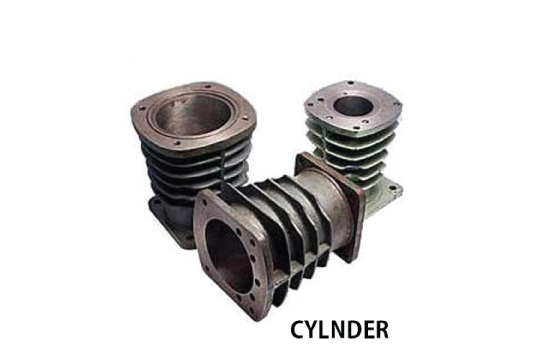-
Call
-
Whatsapp
9825014048
-
Location


Piston Compressor Cylinder
Piston Compressor Cylinder
Pistons or reciprocating compressors are mechanical devices used in various industries. The cylinders are at the centre of these compressors, where the air is compressed and delivered. Proper and reliable compressed air production is essential to understanding piston compressor cylinder design, operation, materials and maintenance. In this comprehensive guide, we will delve into the world of piston compressor cylinders inside, examining their functions, types, components and required maintenance actions.
Piston compressors are a class of quality displacement systems. One or more rearward pistons in a cylinder compress air or air. These compressors are widely used in manufacturing, automotive, and other industries for various applications, such as air tools and air cars and supplying compressed air for industrial applications.
Functions of a Cylinder in a Piston Compressor
The cylinder in a piston compressor performs several essential functions:
- Ventilation: The cylinder acts as an inlet for ambient air. The intake valve opens to allow air to enter the cylinder during the intake stroke.
- Pressure: As the piston rises in the cylinder, its volume decreases, compressing the air, which increases air pressure.
- Line: Line After compression, the air is pumped to downstream applications through discharge valves. In this process, the air leaves the cylinder and expands ready for use.
- Seal: To prevent air leakage during filling, an airtight seal should be provided inside the cylinder. A piston ring or packing seal achieves this seal.
- Heat Dissipation: During compression, the air temperature increases due to the compression process. This heat must be transferred to the cylinder and surrounding components to prevent overheating and ensure safe operation.
Cylinder Systems
Piston compressor cylinders come in a variety of shapes to suit different applications. Typical features include:
- Single-stage cylinders: Single-stage cylinders have one chamber used at low and medium pressure.
- Two-sided cylinder: A two-sided cylinder has two chambers: a low-pressure chamber and a high-pressure chamber. The gas is initially compressed in the low-pressure chamber and then recompressed in the high-pressure chamber, resulting in an increased final pressure.
- Multi-Cylinder Arrangement: To achieve large piston compressors' high power and pressure requirements, multi-cylinder arrangements can be either parallel or series. This arrangement allows for better pressure and load distribution .
Manufacturing Cylinders
The choice of cylinder material depends on factors such as compressor size, intended use, and operating conditions. Common uses include:
- Cast Iron: Cast iron is known for its durability and corrosion resistance. It is commonly used in heavy industrial compressors.
- Aluminium: Aluminium cylinders are lightweight and corrosion-resistant. It is commonly used in portable and small compressors.
- Steel: Steel cylinders provide strength and are suitable for high pressure. It is commonly used in industrial and automotive compressors.
Repair and Maintenance
Proper maintenance is essential for reliable operation of piston compressor cylinders. Routine maintenance tasks include:
- Lubrication: Cylinder walls and piston rings need adequate lubrication to reduce friction and wear. Lubrication schedules should be diligently followed.
- Inspection: It should be regularly inspected for signs of wear, damage, or deterioration. Cylinder components such as pistons, rings, and valves should also be inspected and replaced if necessary.
- Heat Dissipation: Proper heat dissipation is essential to prevent overheating. Therefore, it is necessary to ensure that cooling systems such as fans or jackets are in good condition.
- Cleaning: Cylinders must be kept clean to prevent the accumulation of dirt, which can affect performance and efficiency.
Piston compressor cylinders are the main components controlling compressed air, making them essential for producing compressed air in various industries. To ensure piston compressors' efficiency, reliability, and durability, they must exist long enough to understand their function, types, features, and maintenance requirements.
As technology advances, cylinder designs and materials improve, improving performance, reducing maintenance, and increasing compressor performance. Because of the importance of piston compressor cylinders, investing in their proper maintenance is essential. Companies can use compressed air energy for a wide range of applications if it is discovered.


FAQ

Frequently Ask Questions
The piston compressor cylinder is the chamber where air is compressed by the reciprocating motion of the piston. It plays a crucial role in the compression process, where air is drawn in, compressed, and then discharged.
Signs of a worn or damaged piston compressor cylinder may include decreased compression efficiency, excessive oil consumption, air leaks, or visible damage such as scoring or pitting on the cylinder walls. Regular inspection and monitoring of compressor performance can help identify issues.
Piston compressor cylinders are typically made from durable materials such as cast iron or aluminum alloy. These materials offer the necessary strength, heat resistance, and wear resistance required for efficient compression and durability under operating conditions. The choice of material may vary based on factors such as compressor size, application, and environmental considerations.

